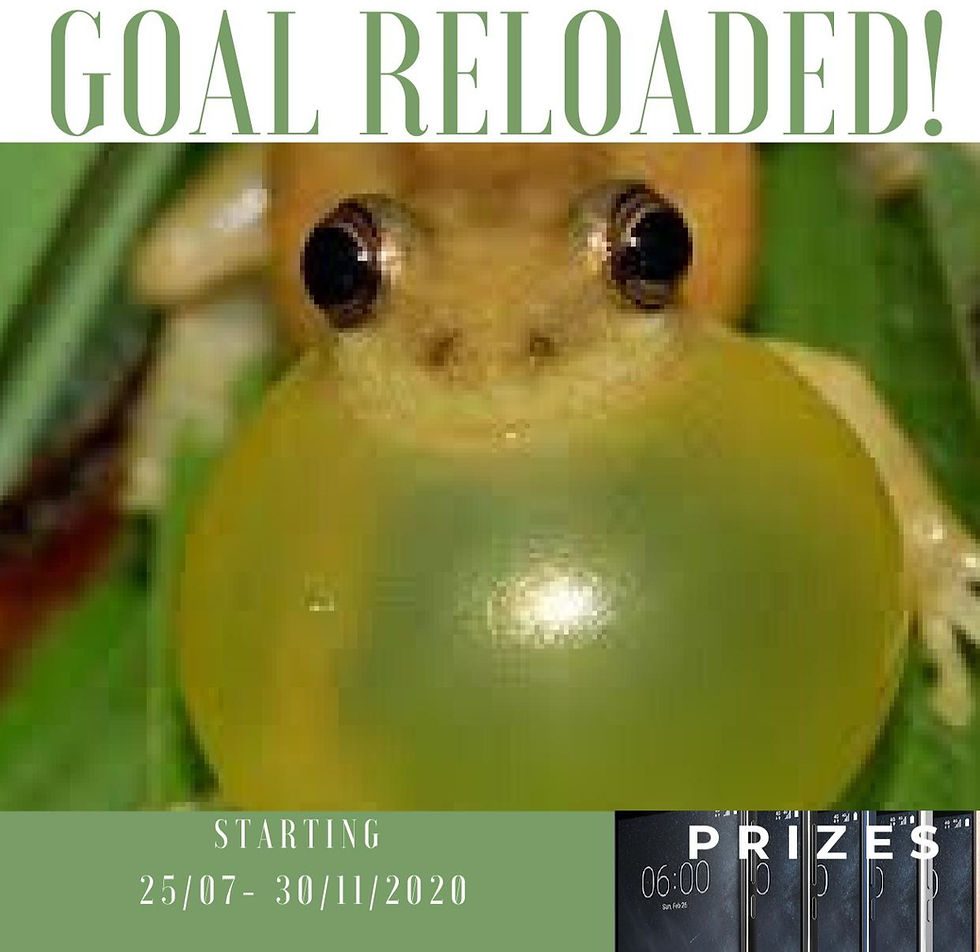The Frog Named After Anus
- Save Ghana Frogs

- Jun 23, 2020
- 2 min read
Updated: Aug 11, 2020
The Ringed River Frog (Phrynobatrachus annulatus) is a tiny frog which can easily fit on the thumb of an adult human. In fact, the longest Ringed River Frog ever recorded to date was a female which measured only 26 mm long. If being tiny was not amazing enough, the frog also has a strange name, ‘annulatus,’ which is from the Latin word, 'anus.' While ‘anus’ might not be the nicest name, it is referring to how the frog has small, black rings that decorate its underside.
The Ringed River Frog may not be as beautiful to some as many other frogs, but it does possess special features that will catch your attention any day. The frog is light-brown and has bumps that covered its back and dark spots. Its big eyes pop out and have large, dark horizontal pupils which look like they are held together by string. On the frog’s eyelids are also pointy lumps called spines which are not found on many frogs. Their upper and lower lips when closed seem sown together with thick black threads making it look mummy-like. With so many things happening on its back, the frog’s underside is rather simple. If not for its dark rings, its smooth underside would be white only.
This frog is also good at weather forecasting. When the female Ringed River Frog wants to lay eggs, it looks for dried-up ponds, lays the eggs, and then the male frog fertilizes the eggs quickly just before it rains. Because the frogs do not need to swim to lay or fertilize the eggs, their fingers and toes are mostly unwebbed.
The Ringed River Frog is found only in primary forests near remote rock hills. The frog is found in four West African countries: Ivory Coast, Ghana, Guinea, and Liberia. Forests where the frog has been recorded in Ghana include: Draw River, Boi-Tano and Sui River Forest Reserves. The recording from the Sui Forest Reserve was made by Save Ghana Frogs after it was initially thought to live only in the first two forests.
The frog is currently listed as ‘Endangered’ which means it is seriously at risk of disappearing if its habitats are not protected. The greatest threat to the frog is losing its habitat. Save Ghana Frogs is watching these frogs and working with government to protect the Sui River Forest Reserve and reduce threats to the frogs such as logging, farming and mining.




Comments